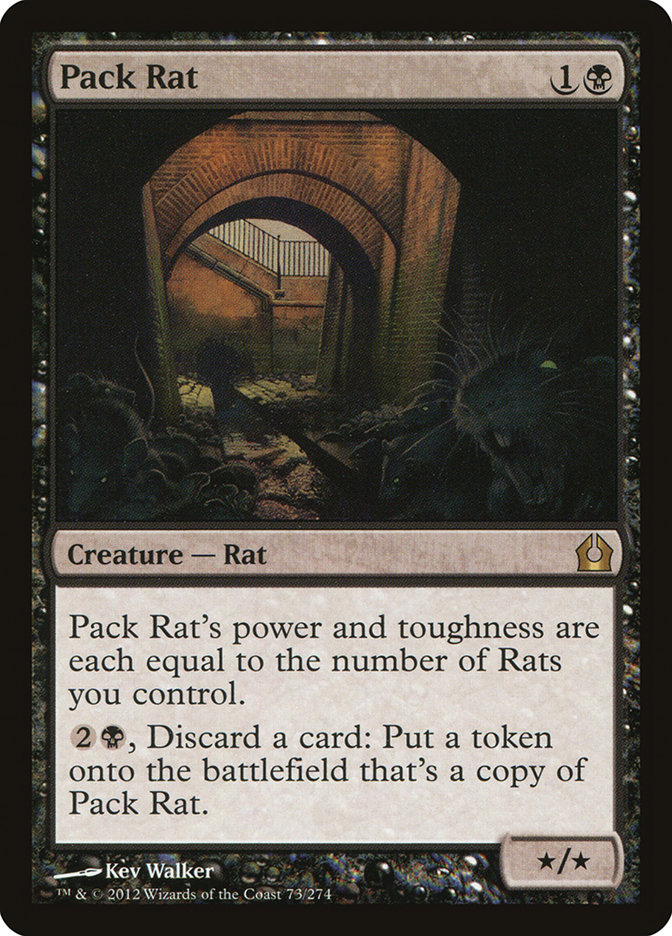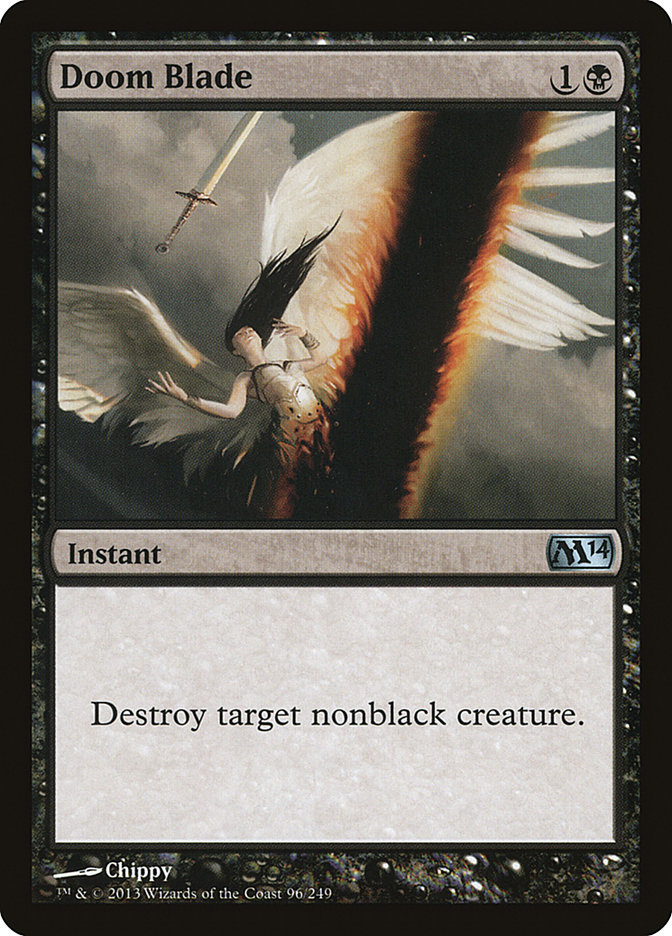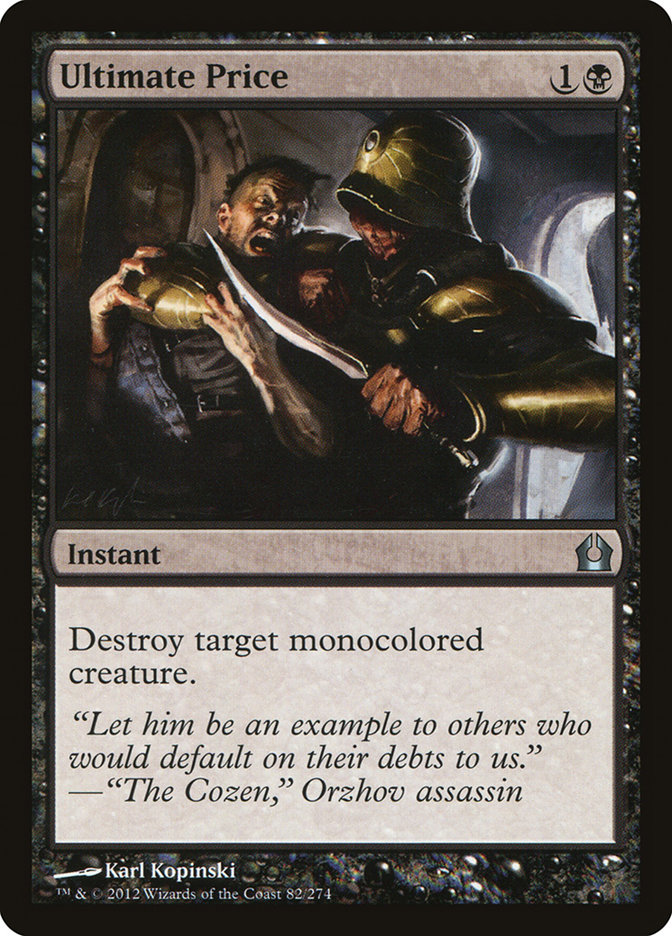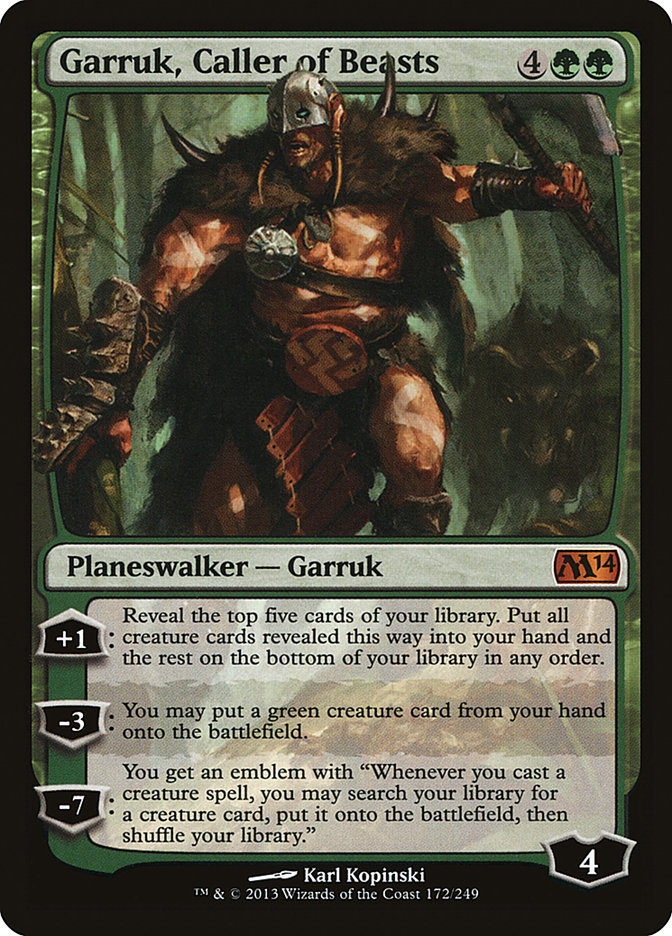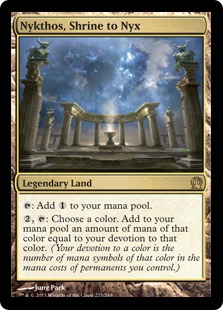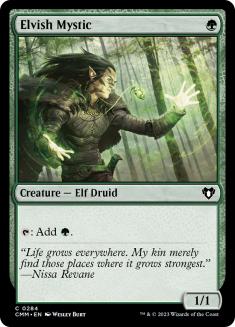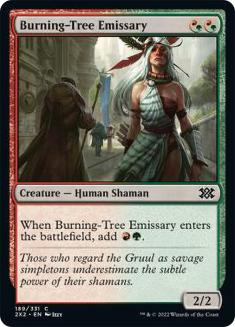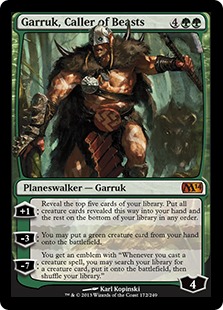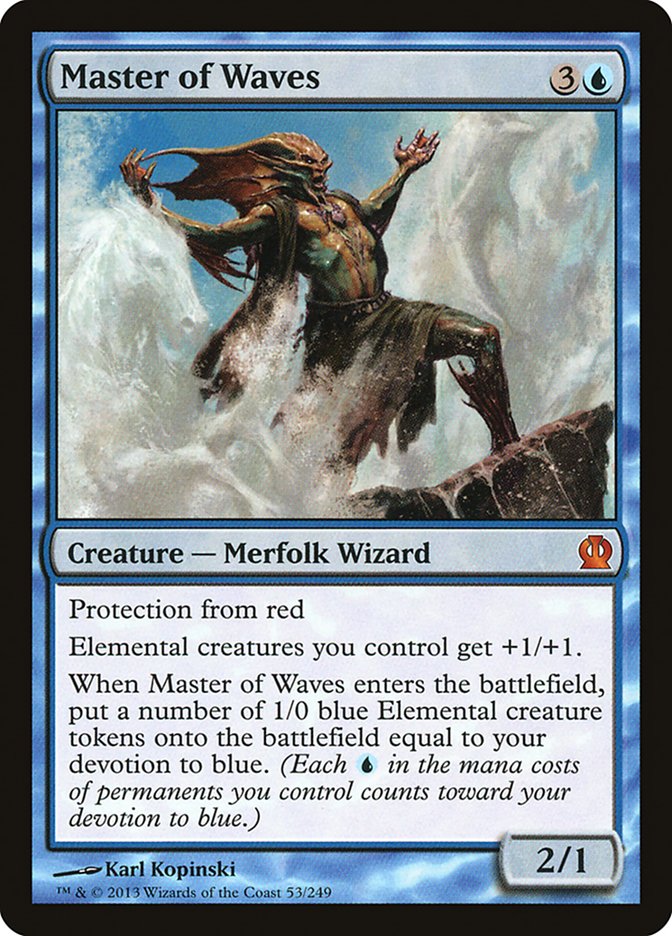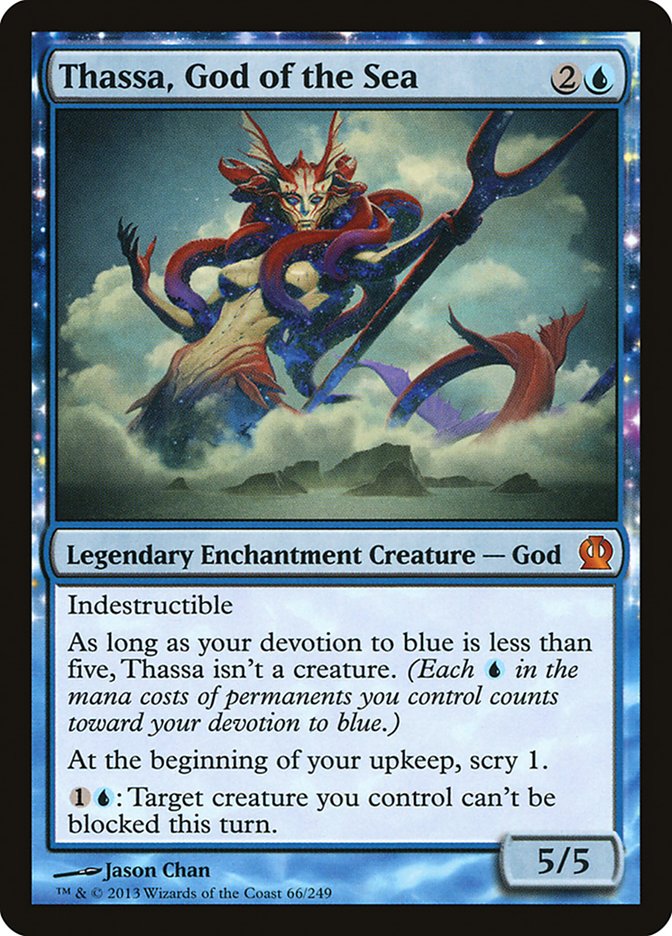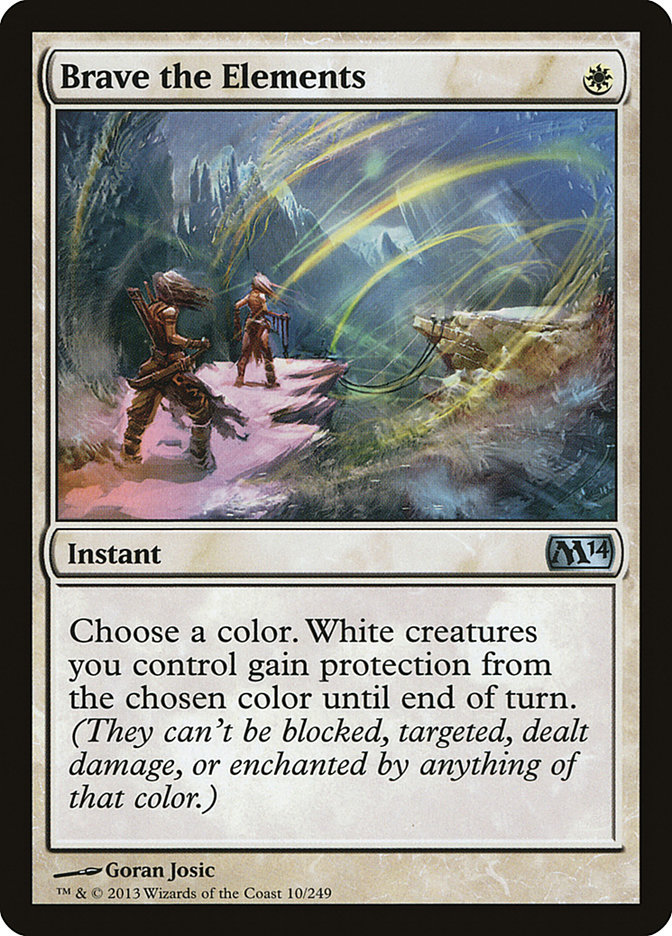Devotion, Esper, and Orzhov?
Lumping all of the Devotion decks together is the easiest way to sum up the format, but it isn’t the most accurate. For instance, Mono-Black Devotion isn’t really very similar to G/R Devotion at all. Actually, Mono-Black Devotion is strikingly similar to B/W Midrange—Thoughtseize, black removal, and midrange creatures.
So perhaps Devotion, Control, and Black/x is a better way of putting it? I don’t know. That still doesn’t seem right. G/R Devotion and Mono-Blue Devotion are more similar to each other than black, but they are still radically different with game plans and matchups nothing alike. I would start with the following four pillars:
While we do see Thoughtseize in small numbers in some Sphinx’s Revelation decks, here it represents the midrange approach and brings with it a plethora of black removal.
If we had to divide Standard into three, the most accurate breakdown would actually be:
Here, Hero’s Downfall encompasses Esper Control, B/W Midrange, and Mono-Black Devotion.
What about Red Devotion?
Is that even a real deck? I mean, obviously it is something, but so are R/W, B/R/W and G/W. Why should Red Devotion get bumped up in the top-tier conversation? Because it has the word “devotion” on two of its cards? Please, Heliod appeared in almost as many decks as Purphoros in day 2 of GP Louisville.
At its core, the format is basically:
- 50% Doom Blade decks
- 50% Cards that die to Doom Blade
Not surprisingly this led to a surge in Mono-Black Devotion and Esper Control. Mono-Black is a Doom Blade deck full of creatures that don’t die to Doom Blade. Unfortunately, it was discovered that you can play a mix of Doom Blades and Ultimate Price, and Dark Betrayal is gaining traction. Plus, the card quality in Mono-Black just isn’t as high as some of the other decks. That said, it is definitely a real deck and is the latest in a long and proud tradition of Mono-Black Control decks that people will forget were good during the next spoiler season when some new sweet triple-black card is previewed.
“Hint: it’s never the next coming of Mono-Black Control.”
Obviously quotes like that are said in jest, but really it is easy for people to forget just how often Mono-Black Control is good. In fact, over the past twenty years, Mono-Black Control is surely in the Top 5 of all-time most successful archetypes. I mean, what other archetypes can even compete?
- U/W Control
- Mono-Red Aggro
- White Weenie
Mono-Black Control has been good more years in Magic history than not. Any of these sound familiar?
- Sinkhole
- Hypnotic Specter
- Nether Void
- Hymn to Tourach
- Necropotence
- Demonic Consultation
- Infernal Darkness
- Yawgmoth’s Will
- Corrupt
- Vampiric Tutor
- Phyrexian Arena
- Mind Sludge
- Mutilate
- Phyrexian Obliterator
- Skithiryx, the Blight Dragon
- Gray Merchant of Asphodel
You know why people always look for the cards to make Mono-Black Control work? Because it has been good 30 times before. It’s like those people that always look for the Mono-Red Aggro deck—which, to be blunt, has been good fewer times than Mono-Black Control in the history of Magic.
I don’t know how many times I’ve heard stuff like:
“Wizards doesn’t make cards that make Mono-Black Control possible anymore.”
“Control is dead. Wizards doesn’t make those kind of cards anymore.”
“Nobody plays beatdown anymore. Tournament players don’t play red decks anymore.”
“White Weenie is never good.”
Yet think about how many times Mono-Black, U/W, and Mono-Red have “come back.” How many Pro Tours have been won by White Weenie?
You know what archetype Wizards doesn’t make cards for anymore?
Prison.
If a deck promotes a healthy play pattern but doesn’t seem to be good right now, give it time. Wizards of the Coast intentionally varies the archetypes it gives the most support to in order to keep the metagame changing and each year being a different experience than the year before it.
End Semi-Annual Mono-Black Control Rant
Pro Tour Theros proved that Theros is in fact a strong set that has turned Standard completely on its head. While some new Standards in fall are just upgrades to the Block format, this one is a completely different animal. Theros may only be one of five legal sets, but it appears to be having a larger defining impact on the format than any of the other four sets. Devotion is the most important mechanic in Standard, and Theros has led to a format primarily populated by monocolored and two-color decks, unlike the Block format’s three-color world.
Here is a breakdown of the post-Pro Tour metagame, with data taken from the Top 16 of the StarCityGames.com Standard Open in Seattle and day 2 of Grand Prix Louisville (including Top 50 data after day 1).
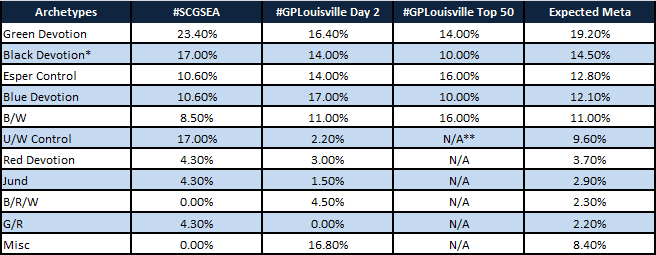
*Includes at least one B/W deck that is listed as Black Devotion instead of Orzhov because of Gray Merchant but has some properties of Orzhov.
**Top 50 info on fringe archetypes was unavailable, so fringe archetypes at the GP use 100% day 2 numbers instead of 50/50 split between day 2 and Top 50 for determining expected meta percentage.
While we do have a relatively diverse field, it’s also one with half a dozen big decks that are dominating the top. What’s particularly fascinating is how different the top-tier metagame is from the pre-Pro Tour metagame. How much of the popularity of decks like Jund and B/R/W is just momentum? Are we going to see those decks fall even further in the following weeks?
What does the format look like when we strip it down to our four key cards?

Let’s take a look at each of these major archetypes. Up first is Thoughtseize. The day before GP Louisville was filled with talk of Mono-Black Devotion. While its presence in the tournament dropped going into day 2, compared to its massive popularity it is still putting up respectable numbers.
All tournament long Brad Nelson led the pack with his take on Mono-Black Devotion. Going undefeated on day 1, Brad stayed strong on day 2, finishing in sixth place with this list:
Creatures (15)
- 2 Pack Rat
- 4 Desecration Demon
- 4 Nightveil Specter
- 4 Gray Merchant of Asphodel
- 1 Erebos, God of the Dead
Lands (25)
Spells (20)
- 4 Thoughtseize
- 2 Doom Blade
- 4 Underworld Connections
- 2 Ultimate Price
- 2 Devour Flesh
- 4 Hero's Downfall
- 2 Whip of Erebos
Sideboard

This list is basically the exact list Kentarou Yamamoto took to a seventh place last week at Pro Tour Theros. Brad wisely replaced two of the maindeck Doom Blades with Ultimate Price to account for the increase in popularity of black creatures. He also tweaked the sideboard, moving away from Xathrid Necromancer to make room for more removal and more Pack Rats.
Pack Rat in particular is an interesting change to the Standard metagame over the past two weeks. One of the most notorious Limited bombs of all time, Pack Rat has burst on to the Constructed scene in a big way. There are a fair number of mid-speed decks that have a really hard time interacting with a turn 2 Pack Rat, which can completely take over a game on its own.
For instance, if B/W is facing a Pack Rat, its small creatures are quickly outclassed, its removal doesn’t make a dent (as there are always more Rats coming), and Desecration Demon gets fed indefinitely. Against Green Devotion, you can use Thoughtseize, Doom Blade, and Hero’s Downfall to keep the big threats, like Garruk, Caller of Beasts and Polukranos, World Eater, off the table while Pack Rats beat the rest of the deck.
The other twist in Brad’s list is moving Lifebane Zombie to the sideboard to make room for maindeck Nightveil Specter. Nightveil Specter is a great potential source of card advantage, but it’s also a surprisingly good blocker. It’s sort of halfway between Hypnotic Specter and Vampire Nighthawk.
The other major Thoughtseize / Hero’s Downfall deck is B/W Midrange, a deck Paul Rietzl piloted to his fourth Pro Tour Top 8 last weekend. This week the archetype overperformed, beginning as just single digit percentage of the field on day 1, climbing to ten percent of the top tables after round 5, making up eleven percent of day 2, and occupying sixteen percent of the top tables going into day 2.
Daryl Neiswenter led the way by going undefeated on day 1 with the following list:
Creatures (19)
- 4 Desecration Demon
- 4 Precinct Captain
- 3 Obzedat, Ghost Council
- 2 Sin Collector
- 2 Blood Baron of Vizkopa
- 4 Soldier of the Pantheon
Planeswalkers (1)
Lands (18)
Spells (22)

Orzhov also enjoyed success at #SCGSEA, with Dayv Doberne taking second with it. As for Daryl’s build, it is a carbon copy of the list with which Rietzl made Top 8, changing only a single card. While I don’t condone cutting a land (Swamp) to add a five-drop, I will admit that Blood Baron of Vizkopa’s protection from black has soared in value with a full 50 percent of the field playing black. Additionally, this is a deck I’d rather play 25 lands in rather than 27, with the correct number probably something like 25.7. If you want to play 25, I’d consider cutting the Mutavault instead of the last Swamp.
Personally, I’d recommend adding some number of Banisher Priests to the main or sideboard, as the ability to exile Gods and punish people without removal is quite valuable right now. Additionally, I would take steps to account for the surge in black decks, such as using at least one Ultimate Price maindeck instead of a Doom Blade (though being sure to have the other two Doom Blades in the sideboard). I also think it’s worth considering Dark Betrayal in the sideboard, a perfect card to sideboard a Doom Blade out for. It’s not clear if it is really better than Devour Flesh, but it is much better against Desecration Demon, Obzedat, and Gray Merchant.
If we are talking about cutting a Doom Blade for an Ultimate Price, why not cut them all? While Ultimate Price does kill Desecration Demon, Pack Rat, and Gray Merchant of Asphodel, Doom Blade kills Frostburn Weird, Burning-Tree Emissary, Judge’s Familiar, Boros Reckoner, Ghor-Clan Rampager, Loxodon Smiter, Fleecemane Lion, Voice of Resurgence, Dryad Militant, and more.
Doom Blade is still a slightly stronger card, but the key is having a mix. When you draw one of each, you can usually get value out of each. You can use the Doom Blades you draw on Mono-Black’s Mutavaults and Orzhov’s Precinct Captains. You can use the Ultimate Price you draw on Mono-Blue’s Tidebinder Mages, Mono-Red’s Ash Zealots, and G/W’s Advent of the Wurm tokens. If you were to draw two of the wrong one against any of these decks, you could have some problems.
Going into Pro Tour Theros, Sphinx’s Revelation was widely regarded as the format’s card to beat. It completely dominated the Block Pro Tour, and of the format’s four key cards it was the most known. While Esper Control was the most popular single deck at the Pro Tour, it was still just ten percent of the field. Its popularity has rebounded, once it became clear that there are a lot more devotion to blue and devotion to green decks for it to beat up on, than there are Naya and fast red decks to punish it.
Two players went undefeated on day 1 of Louisville with Esper Control. Brandon Burks started out 9-0 with a nearly complete Wafo-Tapa clone. Wafo-Tapa set the standard in Esper deck design with the build he took to his fifth Top 8 last weekend.
Wafo-Tapa is the most dedicated control player in the world, having played blue in Constructed in 100% of his Pro Tours in the past seven years (and possibly all he’s ever played; that is just how far back the info available to me goes). Truth be told, one of those blue decks was a Hypergenesis deck he played in Extended four years ago, but it was such a miserable experience he vowed to never stray from blue control again.
Wafo and I always look forward to when we swap decks at the Pro Tour to examine the choices the other has made. The look on his face in Dublin was priceless.
“Orzhov? Really? Orzhov?” he asked with a smile and half a laugh. “It must be very good.”
While Wafo-Tapa’s game is not exactly the most well rounded, it is very possible he is the best player in the world at the moment. He was widely regarded as the best player in the world back in 2007 and 2008 up until Luis Scott-Vargas went on his tear. Wafo-Tapa had a rough year and actually fell off the Pro Tour during a year where control was at its worst. However, Mana Leak and Jace, the Mind Sculptor ushered in a return of control decks, and Wafo requalified and instantly skyrocketed back to the top of the game.
Wafo-Tapa’s last four Pro Tour finishes:
- 5th
- 2nd
- 59th
- 5th
It can be easy to forget just how dominant Wafo is because of the eighteen-month ban for being a part of the New Phyrexia leak. However, two points are worth bearing in mind. First, his ban had zero to do with cheating, as made explicitly clear by Wizards of the Coast. They have to protect their business interests, and unauthorized leaking of proprietary information is a serious no-no. Wafo knew he had made a terrible error and along with Guillaume Matignon actually proactively turned himself in, taking full responsibility and accepting the consequences that went along with it.
Second, when was the last time someone made Top 8 of three out of four Pro Tours in a row? I think Kai Budde and Jon Finkel may be the only other players who have done it, and that was a decade ago. It is definitely possible one or two others have done it, but it is certainly an extremely rare feat.
As mentioned above, Brandon Burks 9-0ed day 1 with Esper Control, but so did Jack Fogle, whose Esper deck featured a few more variations from the blueprint laid out by Wafo-Tapa.
Planeswalkers (6)
Lands (20)
Spells (34)
- 3 Plains
- 4 Island
- 2 Syncopate
- 1 Divination
- 2 Doom Blade
- 2 Planar Cleansing
- 3 Azorius Charm
- 4 Supreme Verdict
- 4 Sphinx's Revelation
- 1 Ultimate Price
- 1 Far
- 1 Warped Physique
- 4 Hero's Downfall
- 2 Dissolve
Sideboard

A lot of observations to make here. First of all, note the eight scry lands. Wafo did the same thing, and it should be industry standard. They are better than shock lands in Esper Control (and some other slow decks).
While Wafo-Tapa had Thoughtseize maindeck, Fogle moved them to the sideboard to make room for Syncopate. I’m not totally sold on this, as Wafo had actually cut Syncopate for Thoughtseize in his PT list, a move I was really impressed by.
Fogle also moved away from four Doom Blades, replacing one with an Ultimate Price and one with a Warped Physique. I am a big fan of this change. While I think Doom Blade was perfect for Dublin’s metagame, there is just too much black now to not mix up the removal a little. Fogle also trimmed an Azorius Charm to make room for a Far // Away, which I think is totally reasonable despite how dubious cutting Azorius Charm is in general.
The other change Fogle made was cutting Aetherling, a Dissolve, and Divination for two Planar Cleansings and a land. I really like Planar Cleansing in this format, so I applaud making room, though cutting Aetherling seems a little dangerous in a format with as many Hero’s Downfalls as this one has in a deck with so few counterspells. I have a lot of respect for the discipline to add 27th land. When you cut an Azorius Charm and a Divination, you are going to have fewer ways to smooth out your mana early. The 27th land helps ensure we get to six for Elspeth or Planar Cleansing. At least he still has the Aetherling in the sideboard . . .
While Esper Control was clearly the Sphinx’s Revelation of choice at GP Louisville, the Open in Seattle saw another control deck put up results, including a win by Jesse Hampton. Here is his take on U/W Control:
Creatures (1)
Planeswalkers (4)
Lands (10)
Spells (45)
- 8 Plains
- 8 Island
- 2 Syncopate
- 1 Quicken
- 3 Divination
- 2 Essence Scatter
- 4 Azorius Charm
- 4 Supreme Verdict
- 4 Detention Sphere
- 4 Sphinx's Revelation
- 2 Celestial Flare
- 3 Dissolve
Sideboard

This is a very low-tech build that seems basically straight out of four weeks ago. What’s kind of surprising about this list is the complete lack of Elspeth, Sun’s Champion. I can’t imagine wanting to play U/W (or Esper) without that card, particularly when you only have one Aetherling maindeck. What do you do when they Thoughtseize your Aetherling? When I Thoughtseize people, I usually take the Aetherling even when I don’t know it’s their only kill card. If it gets his, he is stuck trying to win with Jace and Mutavault. That is a helluva grind.
Personally, I would avoid this approach, but Hampton is a strong player and made it work. If you want to play two colors, this is a starting point, but I think the scry lands are too good to pass up even if you are willing to settle for downgrading your black removal spells into white ones and replacing your discard with more permission.
However, it’s not all black decks. Both Green Devotion and Blue Devotion have proved that they have staying power. Here is the Green Devotion deck that Bryan Eleyet used to take third at #SCGSEA:
Creatures (28)
- 3 Scavenging Ooze
- 4 Burning-Tree Emissary
- 4 Elvish Mystic
- 3 Polukranos, World Eater
- 2 Nylea, God of the Hunt
- 4 Sylvan Caryatid
- 3 Arbor Colossus
- 1 Mistcutter Hydra
- 4 Voyaging Satyr
Planeswalkers (9)
Lands (12)
Spells (11)

This list doesn’t stray too far from the list Makihito Mihara finished fourth with in Dublin. The main update is a big increase in the quantity of Mistcutter Hydras, going from 0+1 to 1+3.
Remember when people thought Garruk, Caller of Beasts was a failure and overrated? You would think more people would realize that how good a card is in the exact format it debuts in is a worse predictor of its eventual success than evaluating the card based on its mana efficiency.
This concept is inherently strong against black decks, making it an important part of the metagame. Its Achilles’ heel? It is not that good against control. So while it has gained lots of good matchups from the rise of Thoughtseize decks, it has also gained lots of bad from Esper Control’s resurgence.
Given the widespread popularity of Green Devotion, I love finding room in U/W/x Control’s 75 for Planar Cleansing (or possibly Merciless Eviction). In fact, I would even consider using one or two in the sideboard of B/W Midrange. It’s hard to play a ton of six-drops, but they are just incredible against Green Devotion.
Planar Cleansing has the advantage of taking Garruk, Domri, and Xenagos down, as well as killing all of the creatures. Merciless Eviction exiles Gods and is easier to cast, but I would generally prefer Planar Cleansing despite being not trivial to manage with Detention Sphere and Banisher Priest. A single copy of Merciless Eviction was one of the last cuts from our Dublin sideboard when we went from eighteen cards to fifteen.
Green Devotion sample hand:
Finally, we come to the deck of the tournament in Dublin: Mono-Blue Devotion. Taking first, second, and third, there’s no question that Thassa was the defining deck of the event. Going into this weekend it was obvious the strategy would be popular, but it also had a giant bull’s eye painted on it. The result? It was one of the most popular decks in Louisville but appeared to struggle in the middle of the tournament before rebounding in the last few rounds to end up one of the most successful decks on the weekend, including a Top 8 appearance by Sam Black, who also made Top 8 of Dublin with it.
The French version of Thassa was strikingly similar to the SCG version, and most adopters have used a hybrid of the two styles. For example, here is the list Chad Taylor finished seventh in Seattle with:
Creatures (27)
- 4 Judge's Familiar
- 4 Frostburn Weird
- 3 Cloudfin Raptor
- 4 Nightveil Specter
- 4 Tidebinder Mage
- 4 Thassa, God of the Sea
- 4 Master of Waves
Planeswalkers (2)
Lands (4)
Spells (27)

If everyone is gunning for Mono-Blue Devotion, how does it continue to do well? Well, for starters, it really is a very strong deck. Thassa, God of the Sea and Master of Waves are both absurdly strong cards, forming a sort of Bitterblossom / Mistbind Clique core.
While everyone knows they want to beat Thassa, they also want to beat black decks and Esper and Garruk. It’s not like you can be all in on beating Mono-Blue. It’s not that big a chunk of the field. Besides, even though people want to beat Mono-Blue, it’s clear an awful lot of people don’t actually know how to do that yet. I think we are eventually going to see less dominance by Thassa decks, but it is going to take a change in the way people build decks, a departure from some of the conventional wisdom from last year.
I think the biggest dynamic of new Standard that needs to be understood is just how big spot removal is right now. Spot removal is not “inherently good,” and its contextual strength can be exploited. Esper Control tries to do this by having no creatures, but Hero’s Downfall is still amazing versus walkers. Mono-Black Devotion tries to do this by crippling Doom Blade and using Underworld Connections to trump one-for-one removal. However, people have already adjusted their removal packages, and Underworld Connections can be raced.
How do you exploit a format full of spot removal? Playing no nonland permanents plays right into Thoughtseize. Still, there has to be a way. Maybe it’s time for an increase in combat tricks that beat removal, like Gods Willing or Brave the Elements? What about overloading Hero’s Downfall while crippling creature kill by playing a deck with a dozen or more planeswalkers and no creatures?
One thing that’s clear is that this format is a very different animal than the Standard of last year. It’s refreshing, unusual, strange, exciting. Hopefully that continues because it sure looks like the format has a lot of stages to go through before it settles down.
I didn’t end up being able to make it to Louisville, but I probably would have played B/W Midrange again, this time with access to Banisher Priest. I had some great questions about the deck last week that I want to address.
We did consider Brave the Elements, but the utility of it goes down when you have a lot of spot removal and discard. That is because we have fewer creature standoffs that Brave the Elements would trump. As for its ability to protect our creatures, that really isn’t worth all that much to us. Desecration Demon is our most important creature, which it doesn’t save. Additionally, Obzedat, Blood Baron, and Soldier of the Pantheon all have defensive abilities built in, further reducing the effectiveness of Brave.
Brave the Elements is rarely going to be better than a one-for-one that nets mana. That can be good, but Orzhov would rather just have another threat. Spending the extra mana is not a big concern, and it is just too bad to be in a spot where you draw all spells, including lots of removal and Brave. If it had been a creature, we could have been attacking each turn and getting ahead.
Brave the Elements is at its best in a deck that is mostly creatures and not a lot of straight-up removal. It is for decks that get blocked and decks that want to make their creatures unblockable. It is for decks that need to find a way to buy some tempo.
Another good question was why Rietzl and I like Soldier of the Pantheon against control. I would generally never sideboard out Soldier of the Pantheon against control decks, at least not in Orzhov. It is a cheap threat that can add up to a lot of damage. Anything they are going to use to kill it is generally going to cost more than it. It also makes things awkward for them because of its ability to dodge Azorius Charm and Detention Sphere.
With Thoughtseize and Sin Collector to rip apart their hand, it is not uncommon to make them discard both of their cards that actually kill it and let them keep the Charm and the Detention Sphere. By the time they actually find a Verdict or Hero’s Downfall to kill it, it has often done eight damage and still costs them a full turn, giving you an opening for Desecration Demon or Obzedat.
As for the Green Devotion matchup, yes, we’d love to take out all eight white weenies, but sometimes we are limited in how much we have to bring in. All eight are pretty rancid in that matchup though. While we generally consider the eight weenies to be better than just using a lot more removal like old Orzhov decks used, this is one area where we pay the price.
I think hybridizing Mono-Black Devotion and B/W Midrange is worth exploring, and in fact one such hybrid made Top 8 of #SCGSEA in the hands of Kyle Dunn. I would probably move away from Elspeth, looking to Lifebane Zombie instead.
High Priest of Penance is a worthwhile consideration and certainly shines versus Devotion decks. I would be hesitant to just straight-up cut Precinct Captains for them, but some number could be a reasonable way to get more two-mana plays.
Also, with how black heavy the format has become, I like having access to at least two Underworld Connections in the sideboard. It is just so good in attrition wars.
Where am I looking next? White creatures, planeswalker decks, and a return to Sphinx’s Revelation . . . See you back here next week, when it’s time to get back to brewing! I also haven’t written about Limited in a while, and some of the lessons I learned about Theros Limited are too good to pass up.
See you then!
Patrick Chapin
“The Innovator”

